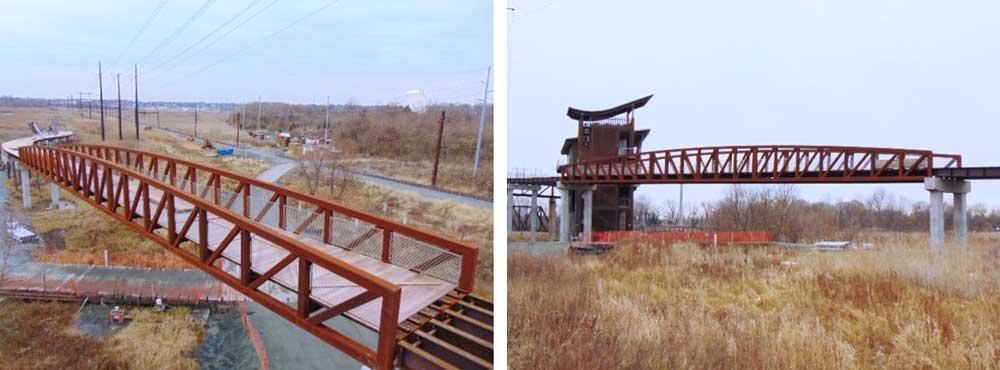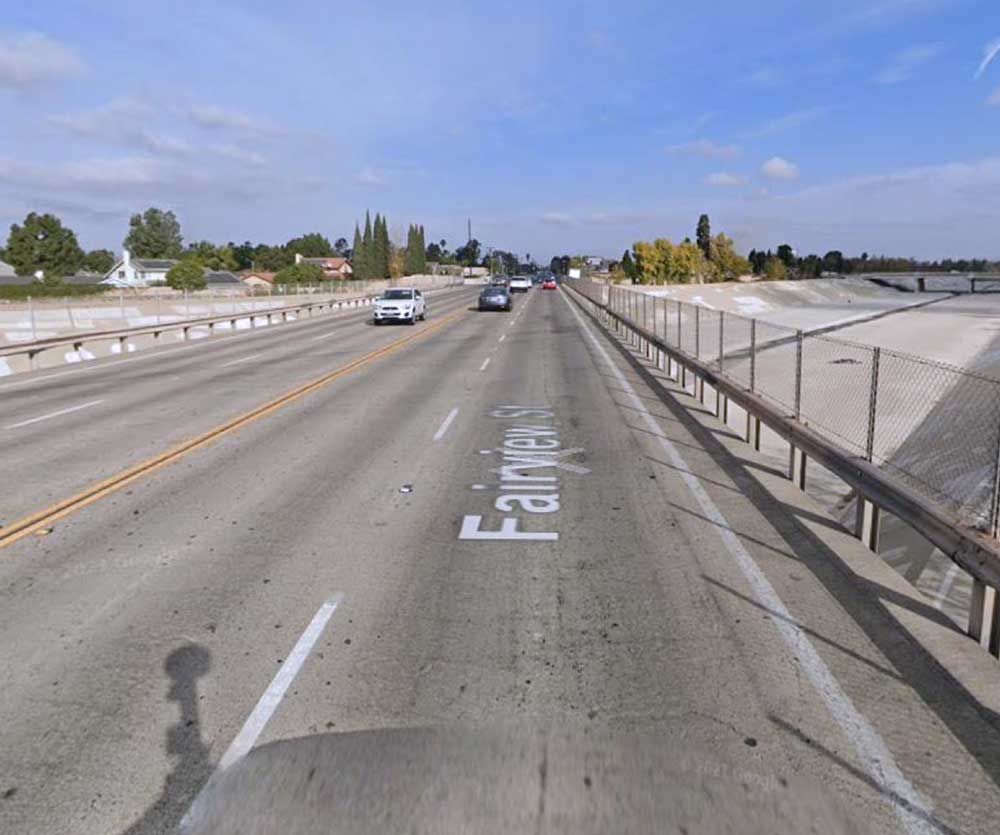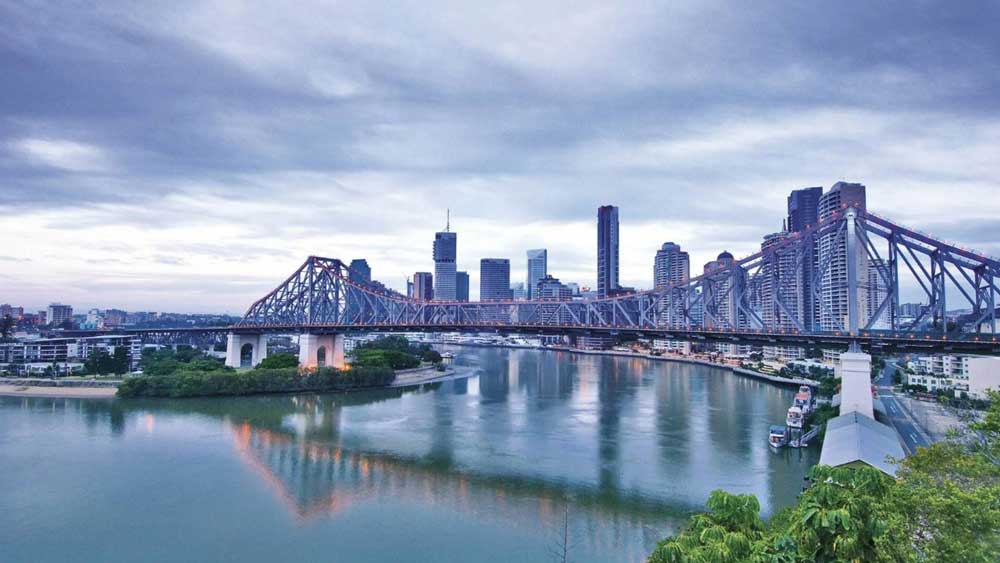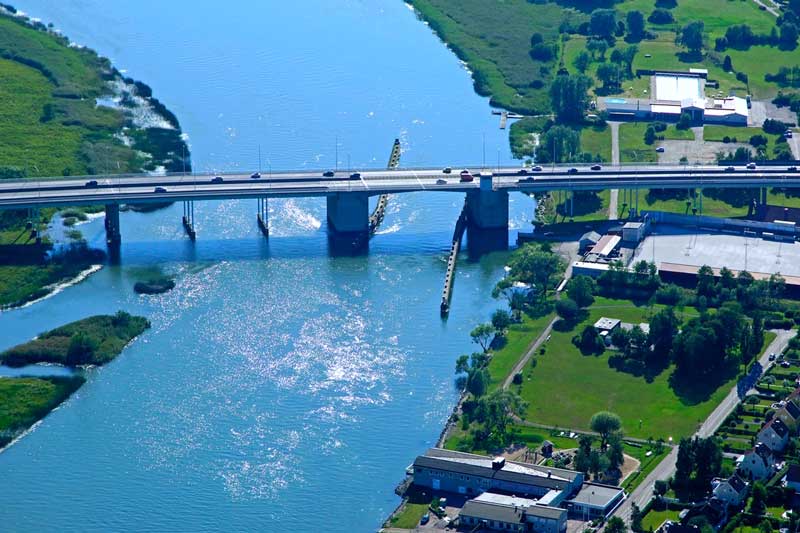Overview
We have introduced the history of metal bridges from iron to stainless steel last week. This week we will elaborate on the transition from weathering steel to stainless steel in bridge applications. Weathering steel, used to apply extensively in bridge constructions before Europe led duplex stainless steel in this application. Stainless steel bridges alone, were not confined to duplex stainless steel. Austenitic and martensitic stainless steels were also used in bridge construction before duplex stainless steel took the throne in the current century.
Weathering Steel
Weathering steel was invented by the United States Steel Corporation in the 1930s, with COR-TEN as its trademark name and more developed by other companies. By adding a bit of nickel, chromium, copper, phosphorous and/or silicon, weathering steel, originally mild steel like, thus feature enhanced corrosion resistance, roughly four times that of carbon steel (National Academies Press 2018).
In 1974, ASTM A709 Grade 50W (yield strength≧50ksi) introduced the use of weathering steel for bridge constructions. It was considered an efficient alternative to coated steel. The first bridge using uncoated weathering steel was New Jersey Turnpike built in 1964, then soon other states like Iowa and Ohio followed suit. (Bashar et al. 2000). In 1970s, due to prolonged exposure to wetness and direct contact with deicing salts, weathering steel bridges accelerated their corrosion. In 1989 FHWA released a technical advisory that gave suggestions on right use of weathering steels in bridge so as to prolong the service life. With this, roughly 40%~45% bridges in US were being constructed using weathering steel that time.

The Transition to Stainless Steel
Martensitic Stainless Steel
ASTM A 1010 (or Grade 410), a dual-phase martensitic stainless steel (Fletcher 2011), paved its way to bridge applications for its enhanced corrosion resistance and hardness. It was firstly developed in 1970S by Columbus Steel but incorporated into the ASTM A709 in 2017 after ArcelorMittal bought its patent in 1991. Thereafter ASTM A1010 has been replaced and henceforward been known as ASTM A709 Grade 50CR.
CR50 was intended to provide enhanced corrosion resistance where ASTM A709 grade 50W or 70W was insufficient while maintaining the structural performance requirements of the above mentioned weathering steels. In 2004, the first application of 50CR in US bridge was the Fairview Road Bridge in California. 10 more bridges using 50CR were then built in US and 2 in Canada. In 2012 the Nou Road Bridge in Japan also used the 50CR derivative, 410 in JIS standard, or SUS410.

Austenitic Stainless Steel
Austenitic stainless steel is dominated by grade 304 followed by 316L in terms of worldwide consumption. From online resources, the first bridge made of 304 stainless steel is located in Mexico, named Progreso Pier. It was regarded as a Mexican maritime wonder turning 84 years old in 2025 since its completion in 1941 (Yucatán Magazine 2025).
Despite 304 stainless steel rebar applied in the Progreso Pier, 316L is actually more prevalent for worldwide bridges using austenitic stainless steel, such as Simone-de-Beauvoir pedestrian bridge crossing the river Seine in Paris (2006) and the Story Bridge in Brisbane (2015).

Generally, austenitic stainless steels like 304 and 316L are more corrosion resistant than martensitic stainless steels like 410. However, austenitic stainless steels are mainly used in footway bridges where aesthetic appeal comes as the priority, justified by the previously introduced award-winning bridges in UK.
Austenitic stainless steels can be used in both structural and non-structural parts, in the shapes of rebar, angle bar, flat bar, I-beam, hollow sections, cables, mesh, for instance. Even with the duplex stainless steel dominating the bridge construction in the current century, austenitic stainless steel still has its markets for bridge applications.
Duplex Stainless Steel
At the advent of 21 century, duplex stainless steel has been extensively used for bridges and even tunnels. In comparison with austenitic stainless steel 316L, duplex stainless steel feature higher strength without comprising on corrosion resistance.
The favorable strength-to-weight ratio can save materials and make transportation and assembling easier. For vehicular bridges that necessitate extensive structural materials and meet internationally 100 years’ service life requirement, duplex stainless steels with excellent corrosion resistance and high strength, have absolute advantages. The Helix bridge in Singapore and the HZMB in China introduced in previous articles are good examples.
Comparison among Stainless Steels
Stainless steel materials are mainly classified into 5 categories, with ferritic and precipitation hardening stainless steels rarely seen in bridge applications. However, as the leading stainless steel manufacturer and exporter in China, we CIVMATS won’t eliminate the two categories for we believe they can be useful information for material selection, not confined to bridge construction. Below is the table (National Academies Press 2018).
| Stainless Steel Type | Hardening Mechanism | Corrosion Resistance | Ductility | Alloy/Tensile Strength (KSI) | Weldability |
|---|---|---|---|---|---|
| Martensitic | Quench & Temper | Medium | Low | UNS S41000/70-204 UNS S42000/95-235 UNS S44000/109-294 |
Hard to Weld |
| Austenitic | Cold Work | High | Very High | UNS S30400/72 UNS S31600/72 |
Weldable |
| Duplex | Cold Work | Very High | Medium | UNS S32101/94 UNS S32205/94 |
Weldable |
| Ferritic | Cold Work | Medium | Medium | UNS S40900/65 UNS S43000/65-80 |
Hard to Weld |
| Precipitation Hardening | Age Hardening | Medium | Medium | UNS S17400/135-190 | Weldable |
Tensile strengths are given for popular grades in each stainless steel type. Tensile strengths are approximate and intended only as a comparison of functionally similar materials (AZoM 2001, Baddoo 2013).
Stainless Steel Materials from CHINA - CIVMATS
At CIVMATS, we can customize stainless steel materials in varied shapes like bars, pipe tubes, sheet plate strip & coils, wires & ropes per your specific projects. Whether you are looking for martensite, austenite, duplex, ferrite or precipitation hardening stainless steel, we will be your best choice. Welcome for your enquiry and/or purchasing. Choose CIVMATS, choose reliability.

